As a high-end pipe in the field of oil and gas transportation, the technical standards and market applications of
X80Q straight seam steel pipe have attracted much attention in the industry in recent years. This welded steel pipe, produced using the API 5L standard, has shown irreplaceable advantages in the construction of long-distance oil and gas pipelines with its high strength, high toughness, and excellent welding performance. From production process to practical application, the development history of X80Q straight seam welded steel pipe reflects the technological breakthroughs and industrial upgrading of my country's energy equipment manufacturing industry.
In the field of materials science, X80Q represents the top performance indicators of pipeline steel. Its minimum yield strength reaches 555MPa (80 kilopounds per square inch), which is about 14% higher than that of traditional X70 steel. This means that under the same transmission pressure, the pipe wall thickness can be reduced by 10%-15%, directly reducing material costs and transportation weight. Production data shows that the X80Q steel plate produced by TMCP (thermomechanical control process) has a stable -20℃ Charpy impact energy of more than 200J, and the shear area rate of DWTT (drop weight tear test) reaches more than 90%, which fully meets the requirements of pipeline construction in extremely cold regions such as the Arctic Circle. This breakthrough in material performance enables national strategic projects such as the West-East Gas Transmission Line 3 to adopt more economical and safe pipe solutions.
In terms of production technology, modern X80Q straight seam welded steel pipes generally use UOE or JCOE forming technology. Taking a demonstration production line as an example, the pre-bent steel plate is first formed by a U-type press, then rounded by an O-type press, and finally mechanically expanded to achieve precise geometric dimensions. The temperature control accuracy of the key process can reach ±5℃, ensuring that more than 80% of acicular ferrite is obtained in the microstructure, which is the microscopic basis for achieving high strength and high toughness. The welding process adopts multi-wire submerged arc welding (SAWL) technology. The welding speed of the four-wire welding machine can reach 1.8m/min. With the online ultrasonic detection system, the weld quality meets the highest requirements of the API 1104 standard. It is worth noting that domestic enterprises have achieved full-process localization of X80Q welded steel pipes. After third-party testing, the strain capacity of the product under hoop stress reaches 0.65%, exceeding the 0.4% requirement specified in the API SPEC 5L standard.
Anti-corrosion technology is another core of the application of X80Q straight seam steel pipes. In the Shaanxi-Beijing Line 4 project, the X80Q steel pipe with a three-layer PE anti-corrosion structure has a cathodic peeling strength test showing that the peeling radius after 28 days is only 5.3mm, far less than the industry upper limit of 15mm. The latest nano-composite coating technology extends the design life to more than 50 years, which is particularly important for pipelines crossing high-salinity and alkaline areas. It is worth mentioning that the sacrificial anode material developed domestically has achieved a potential stability of -1.10V to -1.05V (relative to Cu/CuSO4 electrode), which increases the protection efficiency of pipelines in highly corrosive soils to 98.5%.
Market application data show that in 2024, my country's demand for X80Q straight seam welded steel pipes will exceed 1.8 million tons, of which the single batch purchase volume of the Central Asian Natural Gas Pipeline D Line Project will reach 320,000 tons. Compared with spiral welded steel pipes, straight seam welded steel pipes have higher geometric dimensional accuracy (ovality ≤0.6%) and are particularly suitable for high-pressure (above 12MPa) working conditions. In terms of economic benefits, calculations by a multinational energy company show that the full life cycle cost of pipeline projects using X80Q straight seam welded steel pipes is 7%-9% lower than that of the X70 solution, of which material savings account for 60%.
The quality control system is the key to ensuring the performance of X80Q. Advanced production enterprises have established a full-process traceability system from steelmaking to finished products, using a spectrometer to detect 22 elements in each furnace of molten steel, and a laser thickness gauge is equipped in the hot rolling process to achieve 0.01mm precision control. The water pressure test uses an automatic pressure holding system, and the test pressure can reach 1.5 times the standard requirement. A report from a third-party testing agency shows that the size qualification rate of X80Q steel pipes of mainstream domestic manufacturers has reached 99.92%, far higher than the 98% requirement of the API standard.
The future development trend presents three characteristics: first, the wall thickness develops to more than 40mm to meet the needs of deep-sea pipelines; second, the development of automatic welding processes matching X80Q to improve on-site construction efficiency; third, the integration of intelligent pipeline technology, by embedding optical fiber sensors in the pipe body, to achieve real-time monitoring of stress and strain. According to the International Pipeline Association, the global X80Q welded steel pipe market will reach US$15 billion by 2028, of which the Asia-Pacific region will account for 45%.
Against the background of the dual carbon goals, the technological evolution of X80Q straight seam steel pipes will continue to deepen. The research and development of hydrogen energy pipelines has made progress. Preliminary tests have shown that the specially treated X80Q material has satisfactory hydrogen embrittlement resistance in a 10MPa hydrogen environment. This means that this high-performance welded steel pipe may become an important carrier for energy transformation in the future, and its technical boundaries and application scenarios will continue to expand. From raw material smelting to terminal applications, every link in the X80Q straight seam welded steel pipe industry chain is interpreting the technological trajectory of China's manufacturing moving towards high-end and intelligent development.
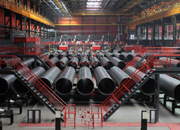 Threeway Steel is known as a professional supplier engaged in manufacturing and distributing a wide range of steel pipe, and our headquarter located the central part of China – Hunan and six associated factories throughout China.
Threeway Steel is known as a professional supplier engaged in manufacturing and distributing a wide range of steel pipe, and our headquarter located the central part of China – Hunan and six associated factories throughout China.
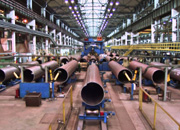 Threeway Steel is known as a professional supplier engaged in designing, manufacturing and distribution of a wide range of steel products with the headquarter located the central part of China – Hunan and six associated factories throughout China.
Threeway Steel is known as a professional supplier engaged in designing, manufacturing and distribution of a wide range of steel products with the headquarter located the central part of China – Hunan and six associated factories throughout China.
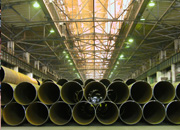 Threeway Steel is known as a professional supplier engaged in designing, manufacturing and distribution of a wide range of steel products with the headquarter located the central part of China – Hunan and six associated factories throughout China.
Threeway Steel is known as a professional supplier engaged in designing, manufacturing and distribution of a wide range of steel products with the headquarter located the central part of China – Hunan and six associated factories throughout China.
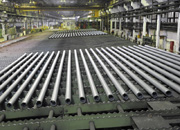 Threeway Steel is known as a professional supplier engaged in designing, manufacturing and distribution of a wide range of steel products with the headquarter located the central part of China – Hunan and six associated factories throughout China.
Threeway Steel is known as a professional supplier engaged in designing, manufacturing and distribution of a wide range of steel products with the headquarter located the central part of China – Hunan and six associated factories throughout China.
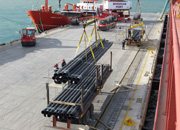 Threeway Steel is known as a professional supplier engaged in designing, manufacturing and distribution of a wide range of steel products with the headquarter located the central part of China – Hunan and six associated factories throughout China.
Threeway Steel is known as a professional supplier engaged in designing, manufacturing and distribution of a wide range of steel products with the headquarter located the central part of China – Hunan and six associated factories throughout China.

